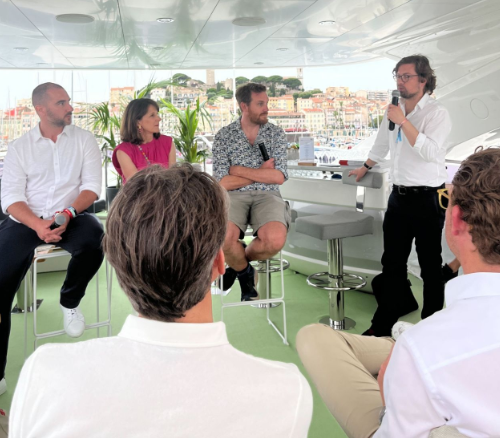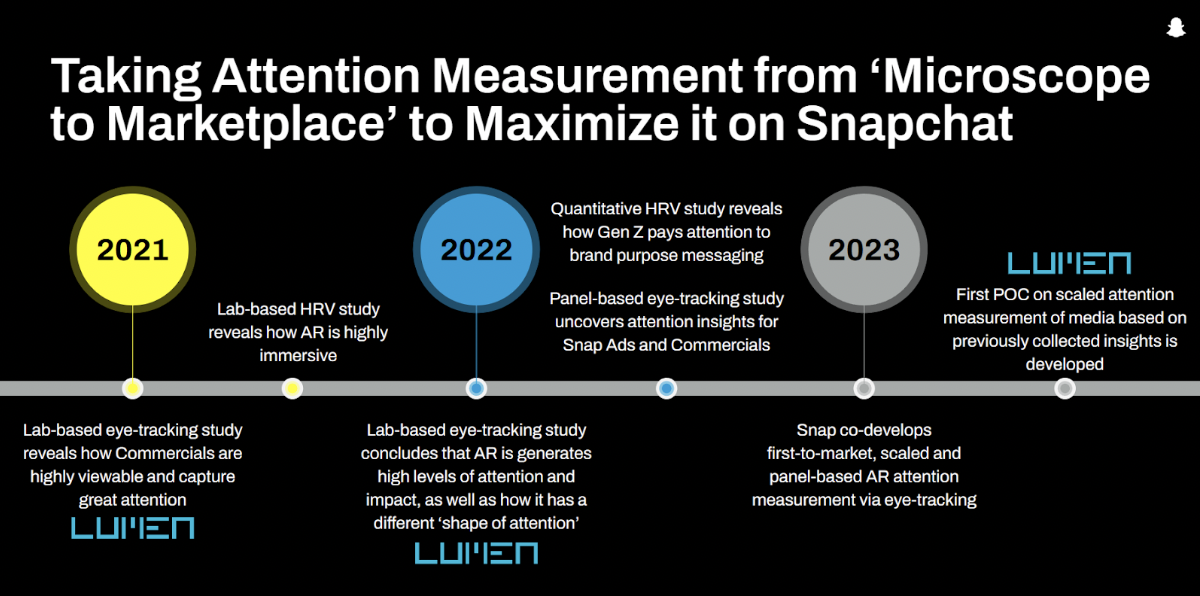3 Attention Takeaways from Cannes 2024


Cannes, one of the most picturesque advertising events of the year, is always an interesting time to reflect on what’s next for advertising. While AI dominated a lot of the conversations, there was talk about CTV, the future of publishers, and the future of retail media.
At Lumen, we got the chance to talk to lots of industry colleagues, partners, and peers to hear what was most important for the advertisers when it comes to the evolving role of attention as the advertising landscape changes. It was an exciting week and three key themes emerged: scale, trust, and action.
Attention metrics start with two questions: did people see the ads and for how long?
At Lumen, we believe the only way to really answer those questions is with real-world visual attention data collected by eye-tracking technology. Visual attention data is the baseline for accurate attention measurement and activation, otherwise the attention is just measured by proxy signals from the start. But, all that said, you can’t count on eye-tracking technology alone to cover billions of impressions – or dozens of channels and formats.
To measure at scale, Lumen generates attention models based on real-world eye-tracking data. With the increasing complexity of the advertising landscape. which include so many new kinds of experiences, that means attention metrics have to scale like never before to cover each context and environment. While this all starts with visual attention data, once the baseline data has been reached, it’s possible to test and train a highly accurate attention model with ground-truth data, tagged impressions, and contextual signals. Attention models trained on the right visual attention data for custom ad experiences can power measurement, optimization, and activation – giving every advertiser the power to understand what consumers see and what they don’t without the eye-tracking.
Scaling attention metrics starts with visual attention data based on custom ad formats and channels. At Cannes, we had great discussions with our partners from Snapchat about our new attention measurement solution, which generates an attention model based on real-world visual attention data specific to Snapchat formats like augmented reality, lenses, and commercials.

By collecting the visual data and generating an attention on these insights, Snapchat has now been able to offer the power of highly accurate attention metrics – without any eye-tracking – to every advertiser on the platform as a way to measure performance and compare attention to Snapchat ads to other channels and formats.
Key Takeaway: We expect format providers, publishers, and platforms to start investing in visual attention data to prove the value of custom formats and environments as attention metrics become an easy way to streamline cross-channel, cross-format measurement across a fragmented ad landscape. This will lead to faster and better optimizations and investments, leading to better performance.
Last week, Lumen released our joint report with Exchangewire, “The MFA Landscape in 2024.” We were surprised to find that some advertisers estimate that up to 55% of their ads are getting delivered to made-for-advertising websites. That’s the high end – the average is around 15%.
But that’s still 15% of wasted ad budget and Lumen’s attention data shows that most ads on MFA websites aren’t even seen.
The most surprising part of this finding is that most advertisers know about the MFA websites in their media mix. Our survey found most advertisers are confident with the level of transparency they get with programmatic media, with an average confidence rating of 4.1 out of 5 in the reports. That’s a key difference to understand in the industry today: there are numbers everywhere, so transparency isn’t really the problem. It’s the trust that the numbers are actually saying something. You can see MFA websites in a report and, if you’re investing in viewability as your objective, then the campaign is still measured as a success.
The tricky part is that when you optimize for viewability, you’re optimizing for low-attention ads – our attention data over the years has shown than 70% of viewable ads aren’t even seen. The more ads on the website, the less likely someone will actually see it.
As Lumen’s CEO Mike Follett discussed on a panel for the MadTech Podcast at Cannes Social, our report found that attention is one of the top three metrics that can eliminate made-for-advertising websites from the media mix by changing the incentives of the campaign from cheap reach to meaningful action. If transparency is about numbers, trust is that those numbers reflect real business results.
Key Takeaway: A bigger emphasis on trust across the ad supply chain will be founded on new metrics that drive new incentives for advertisers, publishers, and consumers.
Today, there’s a real need to for media buyers to not only measure attention metrics, but understand to turn that attention into action. At Cannes, we heard a lot of talk about the importance of attention measurement, but only if it could be proven to drive outcomes.
Integral Ad Science’s Quality Attention Solution, powered by Lumen, has shown that optimizing for attention drive full-funnel results, with an attention-first ad campaign a CPG client driving +69% higher purchase intent and 26% higher brand awareness and a 40% sales lift for a media agency.
Recently, Lumen’s end-to-end attention targeting solution, the Lumen Loop, generated more than +200% higher qualified conversions for a major auto brand while reducing cost-per-action by 40% by filtering the ad inventory for attention based on the brand’s custom attention scores. Given that Lumen can integrate with DSPs like DV360, it was easy to see these results right from the source and connect them back to the attentive PMP that powered the campaign.
That said, turning attention into action depends as much on the data as the decisions that are made based on the data. That’s why made-for-attention media plans are so important across the funnel.
Key Takeaway: While there’s proof that attention really does drive better results – even PwC proved it with us last year! – there’s still a lot of education and strategy to achieve those results with each campaign.
Scaling attention data through attention models, trusting the numbers and taking action on them, and driving results through made-for-attention media plans are all the next big steps for the attention industry.
At this point, it’s clear that the industry has accepted attention metrics as a valuable new way to understand performance. But now, it’s time to learn how to make the most of it. That’s the fun part!
Want to see made-for-attention media in action? Download Lumen’s attention performance guide.